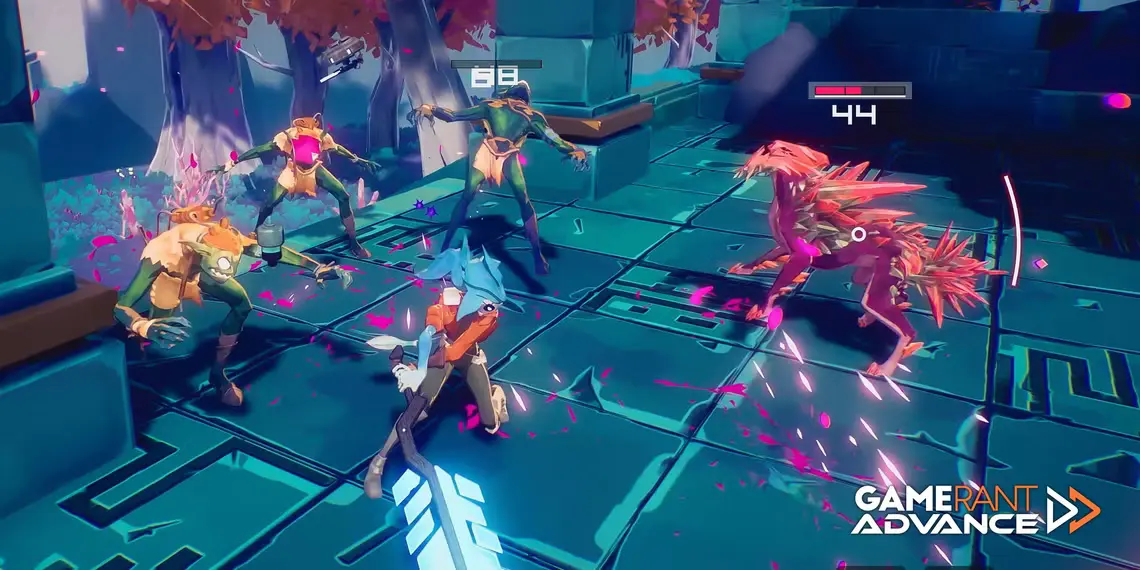Coming to Steam Early Access on January 14, Hyper Light Breaker is the highly anticipated sequel to 2016’s Hyper Light Drifter. This new installment shifts the series from its beloved 2D pixel art to a stunning 3D environment. Players will step into the shoes of a Breaker, exploring procedurally-generated biomes, battling foes, and gathering new equipment as they prepare to face the Abyss King. Developer Heart Machine has already revealed some eye-catching alpha gameplay footage that has fans excited.
In a recent discussion, Game Rant spoke with Lead Producer Michael Clark and Senior Designer Ben Strickland about the gameplay of Hyper Light Breaker. They delved into the game’s fundamental mechanics, the creative influences behind it, and the diverse build options players can expect. This interview has been edited for clarity and brevity.
How Hyper Light Breaker Caters to a Wide Audience
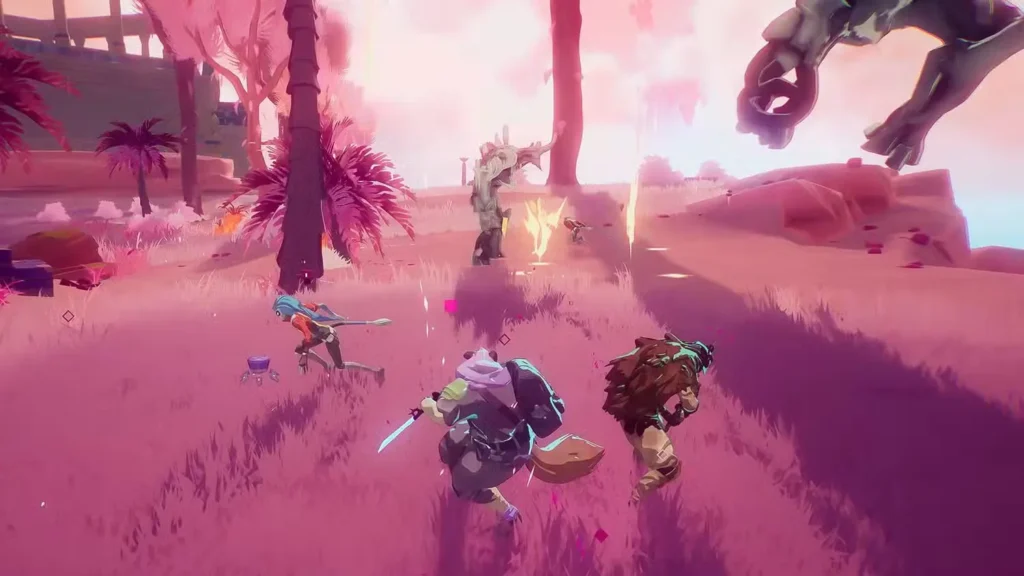
Hyper Light Breaker is bringing multiplayer gameplay into the mix! How do you maintain a balance between the cooperative aspects and the original solo experience to create a seamless experience for players?
Clark: We’re encountering some hurdles when it comes to scaling systems that adapt based on the number of players. Expect to see more resilient and powerful bosses, larger enemy groups, tougher enemies appearing earlier, and more challenging extractions. We prioritize treating difficulty scaling as more than mere stat adjustments. Although sometimes changing stats is necessary, these other factors contribute to a richer multiplayer experience that can’t be achieved by just modifying damage figures. We start by determining what feels right for solo players and then use those insights to enhance the difficulty for multiplayer settings.
Q: Overall, how would you summarize Hyper Light Breaker’s gameplay loop?
Strickland: The game is structured around cycles and runs. Each cycle features a new map filled with monsters and treasures. Players aim to defeat the three Crowns (Bosses) to access the Abyss King. They can attempt the map multiple times, gathering gear and enhancing their abilities until they are either powerful enough to face the Crowns or meet their demise. Regardless of the outcome at the end of a cycle, the map resets, but players retain the resources to strengthen themselves for the next round.
How Hyper Light Breaker Combines Open-World and Roguelike Genres
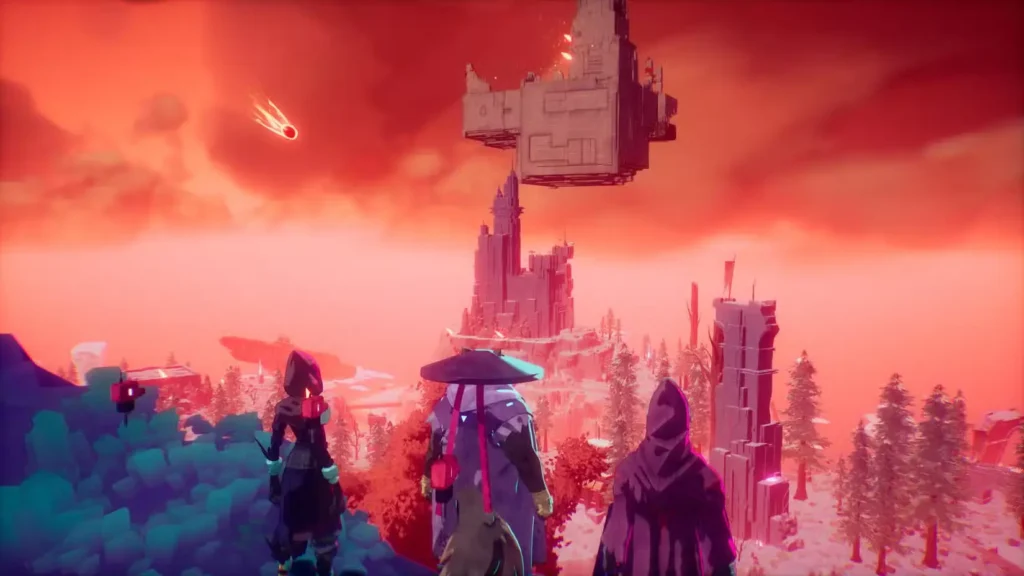
Q: Hyper Light Breaker is described as the first “open-world roguelike.” Can you talk about how you combined these two genres and what challenges(and successes) came from this hybridization?
Clark: We kicked off with what we called an “impossible problem,” which refers to the conflicting elements found in games. Open world games focus on revisiting areas, getting to know them, and exploring at your own speed. On the other hand, roguelikes emphasize quick action, clearing everything out, and beginning anew.
In the beginning, we embraced a traditional roguelike approach, but we quickly realized that even with a world that was too small and didn’t embody the essence of an open world, we still had more game than we needed. One of the key appeals of the roguelike genre is the ability to enjoy quick runs, allowing players to say, “just one more run” without dedicating hours to it. However, even speedrunning those initial versions took over an hour to finish, and it lacked the feel of an open world. In a true open world, players explore and familiarize themselves with the environment, but that experience was missing.
During the fall of 2023, we realized it was time for some bold changes. We envisioned a scenario where you could immerse yourself in procedurally generated worlds for hours, yet each run would be short enough to fit multiple attempts in just one hour. One night, while chatting with Alx, I noted that dying in an extraction game often mirrors the experience in a roguelike. This led us to explore how extraction could effectively combine the vastness of an open world with the emotional rollercoaster of roguelike gameplay. This approach allowed us to unlink the world’s scale from the time required to complete a run. Our team then developed a custom world, experimenting until we pinpointed our goals for a procedural open world. We focused on three main objectives:
The main frustration with our old model was the limited and crowded world. It was like being Godzilla in Disneyland, where you’d unintentionally draw the attention of several enemy groups while focusing on just one. We’ve made the worlds much larger, providing ample space between each element, which enables us to build bigger structures and improve gameplay.
Our earlier designs featured a one-of-a-kind landscape with several islands. Each biome was colorful and distinct in its look, but the islands simply didn’t provide enough room for large mountains, expansive beaches, and other grand features.
The significance of terrain cannot be overstated; it was the key factor we focused on. In earlier iterations, the landscape was simply rolling hills, allowing players to traverse any area directly. This made the world feel empty, as there was nothing to discover or engage with. To change this, our procedural generation team had to completely overhaul our world-building approach. We developed a new system that begins by establishing essential locations, like Crown Arenas and Prisms, which players should always be able to access. We then create pathways connecting these spots, followed by generating the terrain with features like mountains, cliffs, and rivers. Finally, we utilize these paths to determine where to place bridges, carve switchbacks into mountains, or add jump pads for quick ascents up steep cliffs—if players can find them.
Hyper Light Breaker’s Inspiration and Approach to Hub World
Q: Were there any titles you looked to for inspiration when combining the two above genres?
Strickland: If I remember right, Risk of Rain 2 sparked many early discussions because it showcased a variety of open environments. As time went on, we began exploring several extraction-style games like Call of Duty: DMZ and Witchfire.
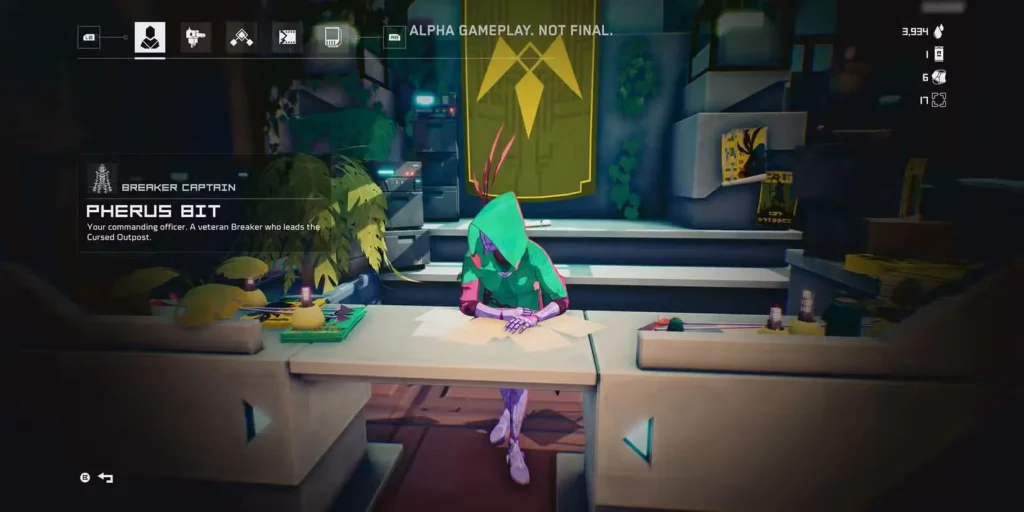
Q: What can you tell us about the hub city that players will be exploring in between runs? Does it also feature elements of random generation or is it more static and constant? What kind of features/characters can be experienced there?
Strickland: The Cursed Outpost stands out as a stable element in a game that’s always evolving. While there are items to discover and quirky characters eager to make a sale, it offers a serene atmosphere to retreat to after the whirlwind of gameplay.
Q: How did you approach roguelite concepts like meta-progression? How much did you want players to lose or keep between runs?
Strickland: We’ve had quite a few discussions about this topic. Our initial idea was for players to develop their Sycoms (which are like character classes) and earn permanent upgrades as they progress through cycles—pretty typical stuff. However, we faced some challenges regarding how to handle the weapons and mods players collect during their runs, especially the more customizable elements. In the early stages of development, the game was quite harsh; players would lose nearly everything at the end of a run, or we would dismantle all their gear at the end of a cycle, which could be quite disheartening! Over time, we decided to incorporate features that would allow gear and mods to last longer, such as introducing gear durability and the option to store items in a vault.
Hyper Light Breaker’s Biomes and Traversal Explained
Q: How large can each of Hyper Light Breaker’s different biomes be? Do these change between runs?
Clark: The size of each world is fairly consistent, meaning it will take a bit of time to traverse from one end to the other, even on your hoverboard. Each world is made up of 3 biomes (out of a total of 4 planned for the early access launch), and while they share similar dimensions, the natural features provide plenty of variety. You’ll have the chance to experience the same world multiple times in a Cycle, but each Cycle will bring a completely new world with unique terrain, biomes, and structures. There are some variations that occur from run to run at launch, but we’re excited to introduce even more dynamic changes as we progress through Early Access.
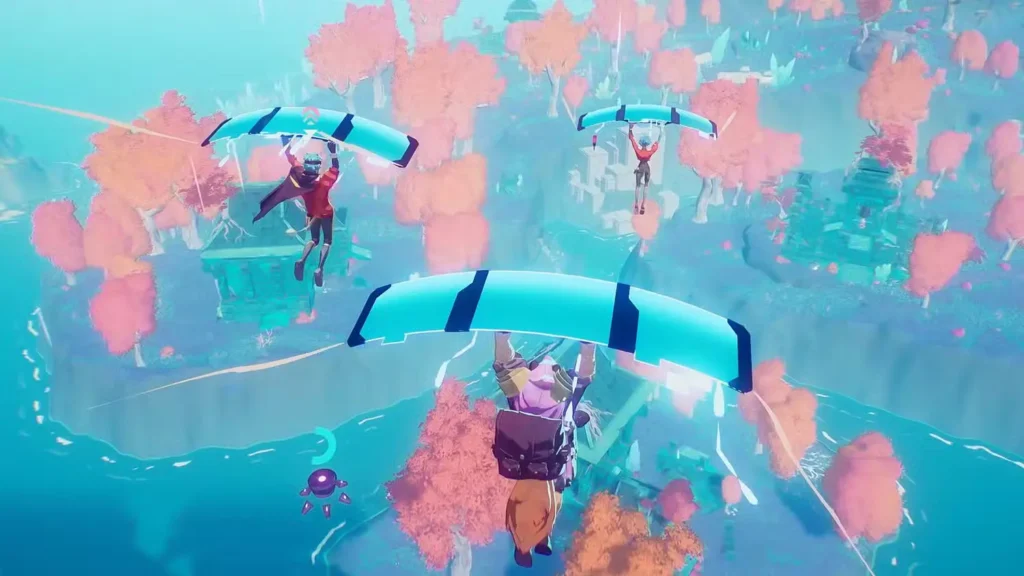
Q: Can you talk about all the possible traversal features, like the hoverboard, and their overall role in the game?
Strickland: Our maps are expansive and feature plenty of vertical elements, allowing players the freedom to choose how they approach their missions. There’s so much to explore! Many of our traversal options are subtle enhancements that improve the overall experience. Spot some loot at the base of that cliff? Just whip out your glider and float down. Have you unlocked access to a Crown’s arena? Hop on your hoverboard and zoom over. There’s ample room to take in the scenery and relax, but when it’s time to get serious, we’ve equipped you with the right tools to do so effectively.
Hyper Light Breaker’s Approach to Progression and Build Variety
Q: Can you discuss how progression systems and character/skill customization work in Hyper Light Breaker?
Clark: There are four key progression systems that will help you level up over time. First, there’s your vault, which consists of the gear you collect. If you die, you will lose some gear, but building a strong vault will ensure you have the power needed for your next run. You can find gear all over Breaker—by defeating enemies, uncovering secrets, purchasing from vendors, and looting chests. The second system involves your SyComs. Each character has several SyComs that offer unique abilities and stats, which you can upgrade. If you want to boost your health or increase your damage with your Rail, that’s the way to do it. Upgrading your SyComs requires Cores, which are rare items scattered throughout the world.
Next in line are Player .EXEs, which provide permanent enhancements that bring new capabilities to your Breaker. These upgrades make your starting gear more formidable, allow you to parry and reflect projectiles, and let you carry medkits, among other things. You can unlock them using Golden Rations. Plus, you can also give Golden Rations to various vendors to improve your relationship with them, unlocking special deals, weapon upgrades, and additional abilities.
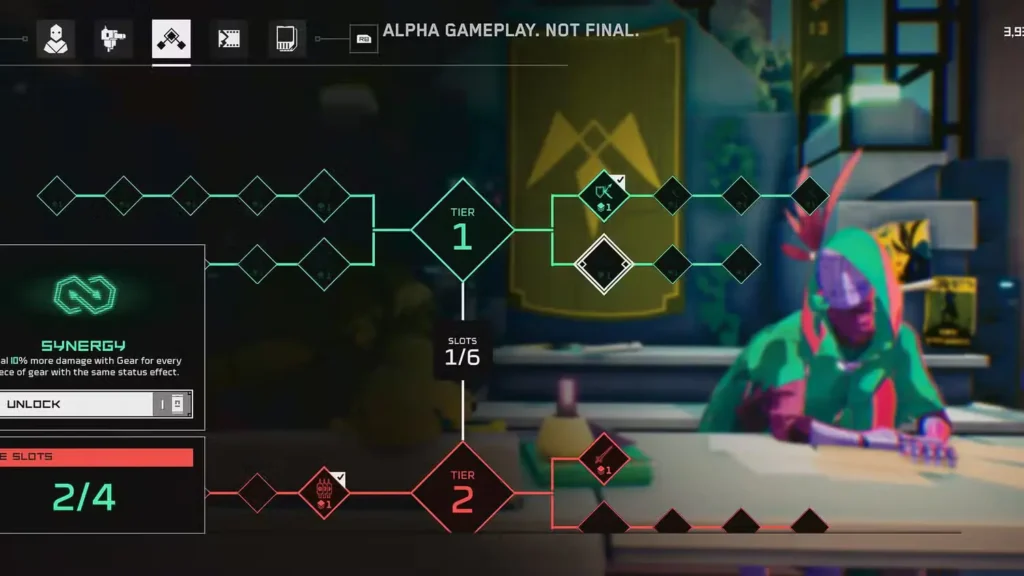
Q: Can you talk about how you approached build variety in Hyper Light Breaker? How much might two players’ playstyles differ? Were you looking to fill specific roles or archetypes?
Clark: We began our gear design by imagining various archetype builds like tanks, summoners, and snipers. This initial focus created a specific set of gear, but we realized it led to a lot of specialized items that didn’t work well together. So, after establishing that initial pool, we started to mix things up for greater versatility. The process mainly involves playing extensively and asking ourselves, “What can I discover next to enhance this experience? Is it available in the game?” In the end, it’s all about playing the game a lot and experimenting with different combinations.

